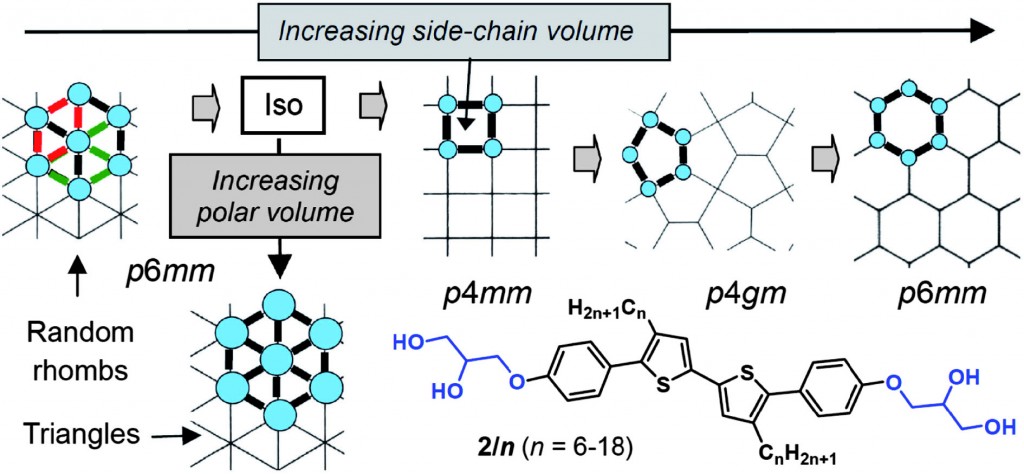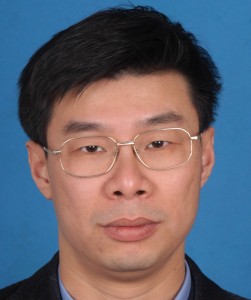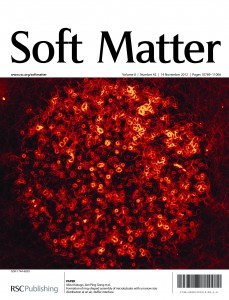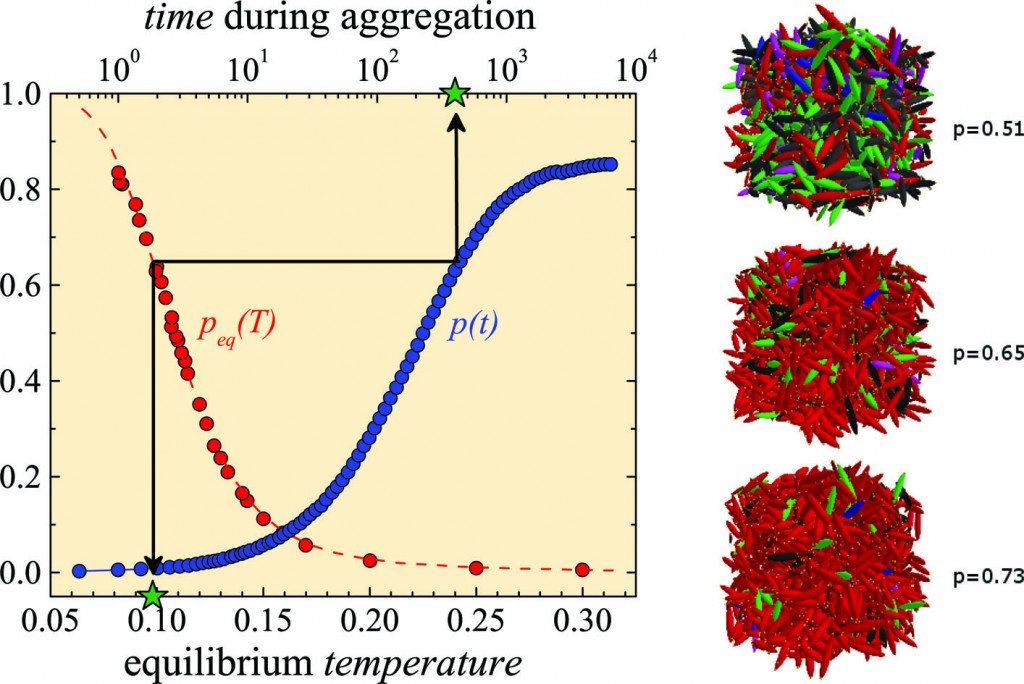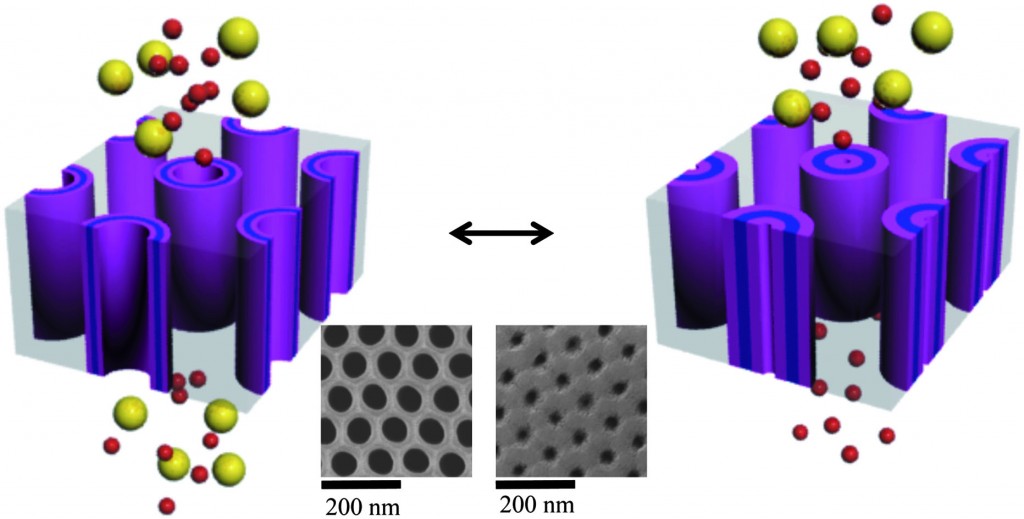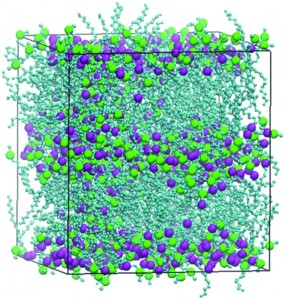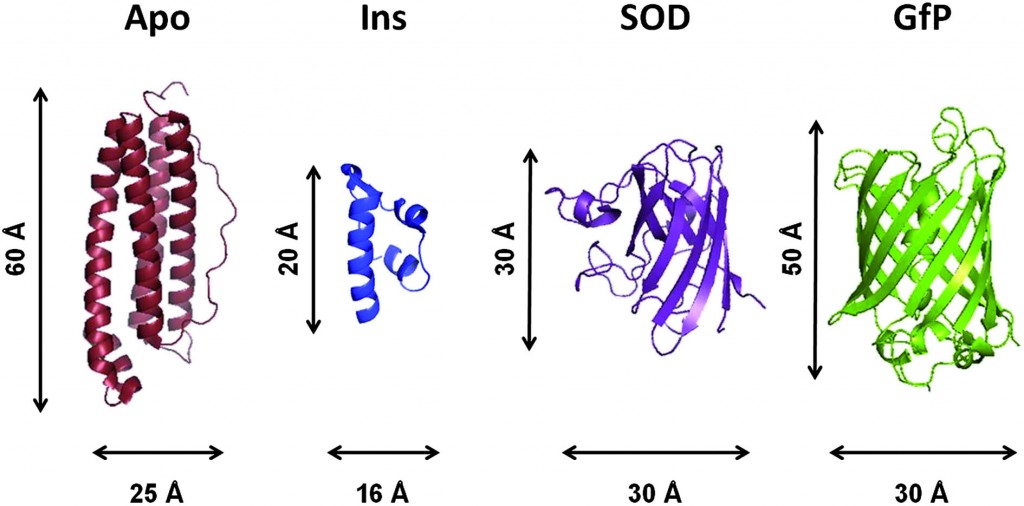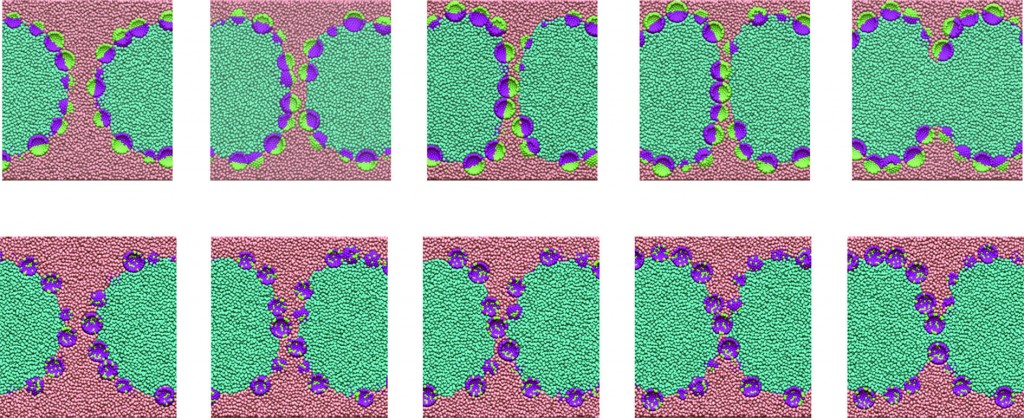Liquid crystals (LCs) can form polygonal cylinder arrays through self-assembly of polyphilic molecules of a rod-like core, two polar end groups and flexible lipophilic lateral chains. Although LC phases are highly dynamic fluid structures, they have the ability to form 2D lattices over large areas because of the self-healing ability and self-assembling. Understanding these process allows for the practical applications of these complex LC phases in organising π-conjugated aromatic in functional organic emitting devices.
In this hot paper, Cheng, Tschierske and co-workers report the synthesis of a series of new 5,5′-diphenyl-2,2′-dithiophene based bolaamphiphiles and their self-assembling into LC honeycombs. The authors show a transition from triangular/rhombic cylinders to a square honeycomb goes through a disordered isotropic state upon reaching a critical lateral chain length of the dithiophene.
Dithiophene based X-shaped bolaamphiphiles: liquid crystals with single wall honeycombs and geometric frustration
Soft Matter, 2012, 8, 10921. DOI: 10.1039/c2sm26575c (free to read for a short time)
Follow the latest journal news on Twitter @softmatter or go to our Facebook page.
To keep up-to-date with all the latest research, sign-up to our RSS feed or Table of contents alert.


